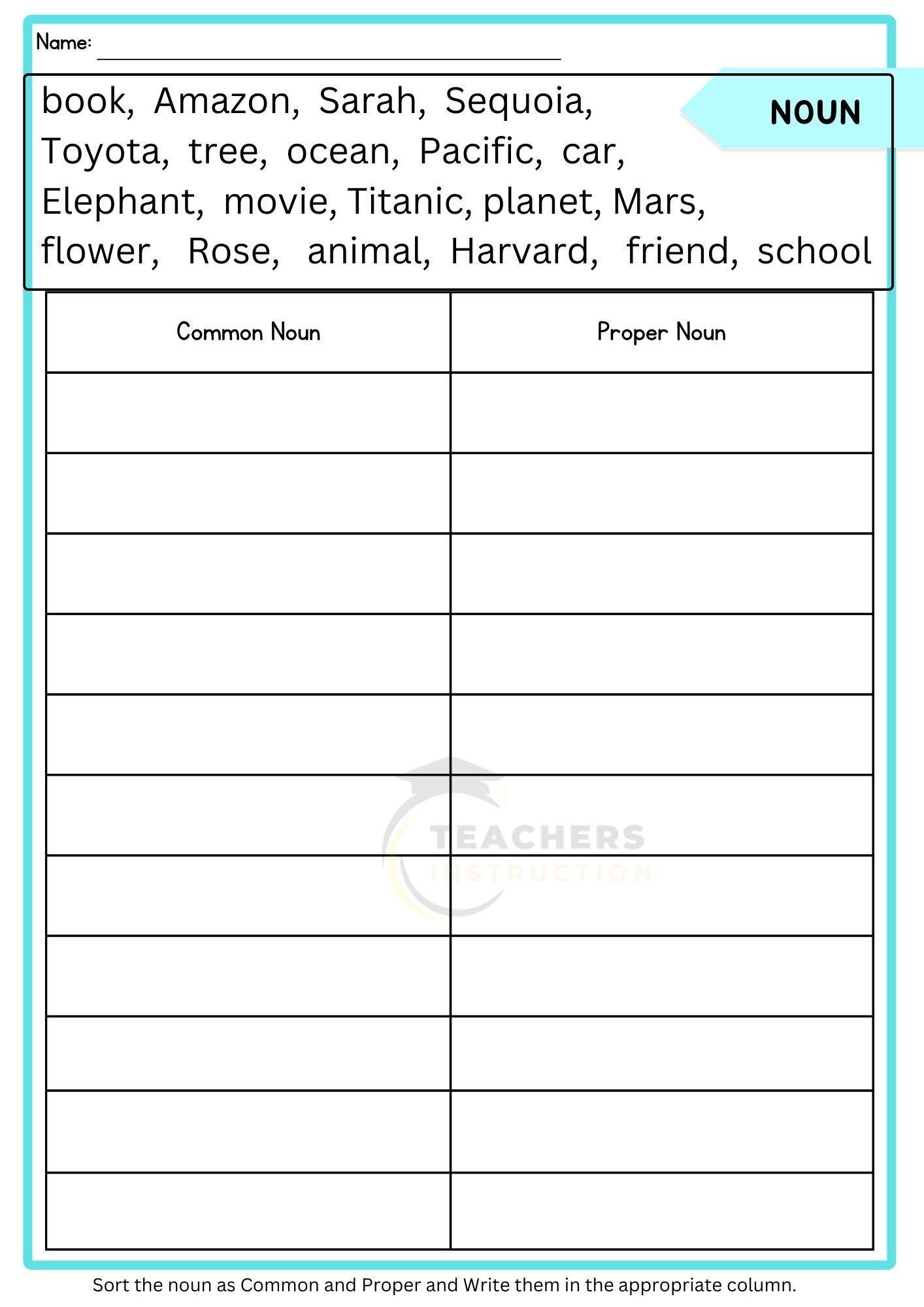Common and proper nouns are essential parts of the English language. Common nouns refer to general, everyday items, while proper nouns are specific names of people, places, or things. Teaching students the difference between these two types of nouns can be challenging, but using worksheets can make the learning process more engaging and effective.
Common or proper noun worksheets are tools that teachers can use to help students practice identifying and categorizing nouns. These worksheets typically include exercises where students are asked to identify whether a noun is common or proper, rewrite sentences with the correct noun type, or fill in blanks with the appropriate noun.
Examples of Common or Proper Noun Worksheets
One common type of worksheet is a matching exercise where students are given a list of nouns and asked to categorize them as common or proper. For example, students may need to match “apple” with “common noun” and “New York” with “proper noun.”
Another type of worksheet may involve rewriting sentences with the correct noun type. Students may be given a sentence like “The boy went to the park” and asked to change “boy” to a proper noun, such as “James.”
Fill-in-the-blank worksheets are also popular for practicing common and proper nouns. Students may be given a sentence with a blank space and asked to fill in the blank with the appropriate noun type. For example, “______ is the capital of France” would require students to fill in the blank with “Paris.”
These worksheets can be tailored to different grade levels and learning styles. For younger students, worksheets may include pictures to help with noun identification, while older students may be given more complex sentences to work with.
Using common or proper noun worksheets in the classroom can help reinforce students’ understanding of these important grammar concepts. By providing hands-on practice, students can improve their ability to identify and use common and proper nouns correctly in their writing.
In conclusion, common or proper noun worksheets are valuable tools for teaching students about these fundamental parts of speech. By incorporating these worksheets into lesson plans, teachers can help students develop a strong foundation in grammar and language skills.
